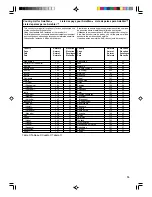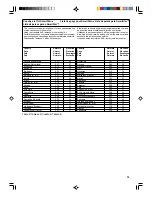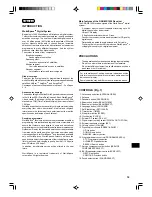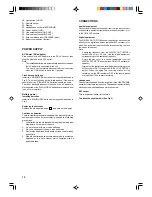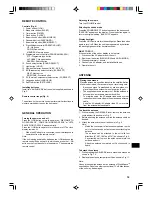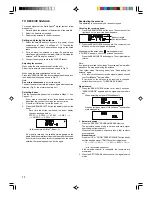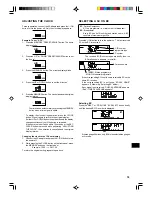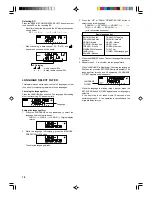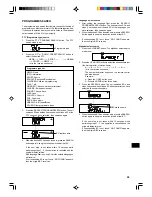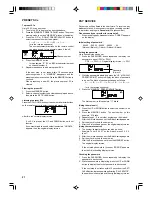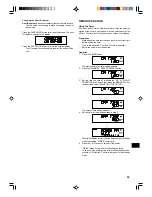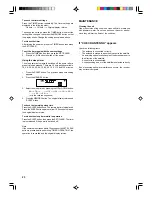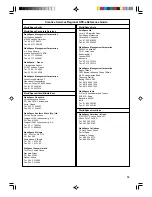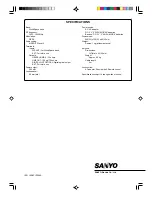
23
SLEEP
To check the timer settings
Press the TIMER button repeatedly. The timer settings are
displayed in the following order:
On time
v
Off time
v
Original display returns
To change the settings, press the TIMER button to select the
setting to be changed, then press the MEMORY button so that
the display blinks. Change the setting as explained above.
To release the timer
After turning the power on, press the TIMER button, then press
the SET/CLEAR.
To set the timer again with the same settings
1.
Press the TIMER button, then press the SET/CLEAR.
2.
Press the
z
/ON button to switch off the power.
Using the sleep timer
The sleep timer automatically switches off the power after a
preset time has elapsed. There are 12 time periods available:
10, 20, 30, 40, 50, 60, 70, 80, 90, 100, 110, and 120 minutes.
1.
Press the SLEEP button. The previous sleep time setting
appears.
2.
Press the MEMORY button.
3.
Select the sleep time by pressing the UP or DOWN button.
60
v
70
v
. . .
v
110
v
120
v
10
v
20
v
. . .
v
50
v
60
v
. . .
(or in the reverse sequence)
4.
Press the MEMORY button. The original display returns and
“SLEEP” blinks.
To check the remaining sleep time
Press the SLEEP button once. The remaining time is displayed.
Press the SLEEP button again or allow 10 seconds to elapse,
the original display returns.
To release the sleep timer while in operation
Press the SLEEP button, then press the SET/CLEAR. The timer
is also released if the power is switched off.
Note:
If the next step is not taken within 10 seconds or the SET/CLEAR
button is pressed while performing “TIMER OPERATION”, the
operation is cancelled and the original display returns.
MAINTENANCE
Cleaning the unit
Clean the outside of the unit with a clean soft cloth, moistened
with lukewarm water. Do not use benzene, thinner or alcohol
since they will mar the finish of the surfaces.
If “CHECK ANTENNA” appears
Check the following items.
-
The antenna is connected correctly.
-
The antenna is placed in a position to acquire the satellite.
-
An azimuth and an elevation angle of the antenna are set to
the direction of the satellite.
-
A line of site is unobstructed.
-
A corresponding beam of the satellite is selected correctly
If an electromagnetic wave interference occurs, the receiver
may not receive signals.


